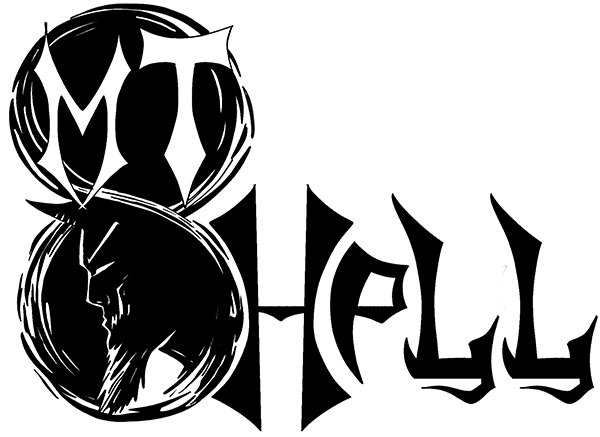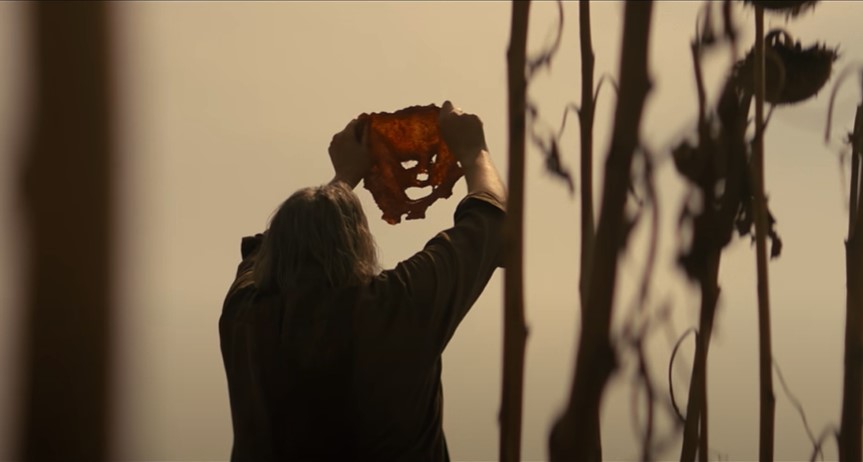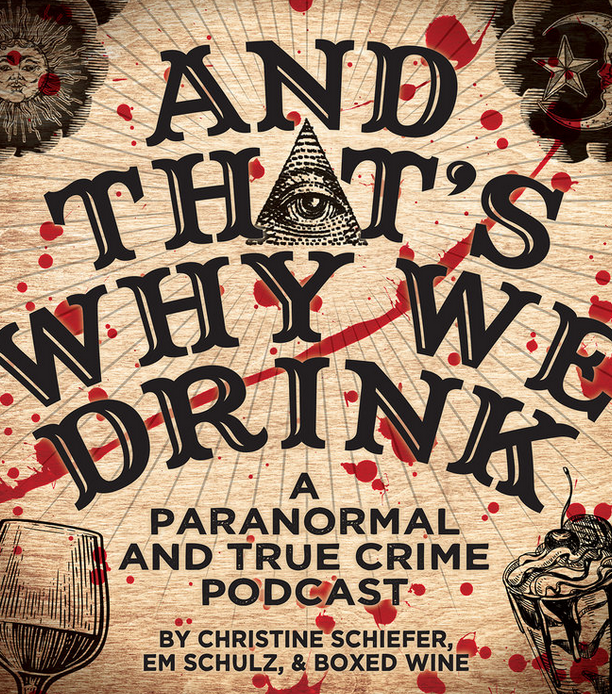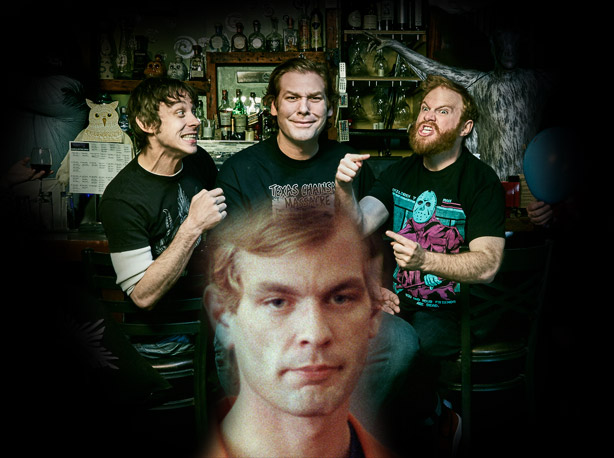
Last Podcast on the Left 35: There’s Bones in the Chocolate
Haunted MTL‘s weekly review of the series as a whole.
This week, we’ll be reviewing the 35th episode of Last Podcast on the Left, which is one of the more problematic ones. So, without any further ado. . .
Mentally and Culturally Challenged
Henry starts the show AGAIN as Hong Kong Henry Zebrowski and claiming a lack of cultural knowledge of Asians. This is our horribly offensive intro to the world of Mentally Challenged killers. There are a LOT of words that haven’t been ok in a long time in this episode so cancel culture folks be forewarned! A discussion of the history of mental disabilities in the boys families follows and is about as carefully handled as your drunk uncle at Thanksgiving.
EPISODE:
Henry, the big naked terror that he is, begins this one with a selection of mentally challenged killers. Buckle your seat belt folks. This is gonna be a bumpy ride.
Johnny Paul Penry:
Johnny stabbed and raped the sister of a football player and used his mental state to jockey for innocence. This actually leads to a fascinating discussion of organized versus disorganized killers. Organized killers have a high IQ and plan out their actions. This is your typical serial killer. Disorganized are usually less intelligent and are usually spree killers and sexual predators and are more opportunistic. Henry discusses boners as well as shaping his gut into a sexual organ for Ben. “Henry Zebrowski Presents: Front Butts” still makes me laugh. For a time they discuss Brazilian fart porn before telling us that Penry was convicted and put to death.
Ricky Ray Rector
Ricky didn’t begin life with his disability. He robbed and killed a man at Tommy’s Old Fashioned Homestyle Restaurant in Conway, Arkansas during Bill Clinton’s time as governor. The bouncer at the door wouldn’t let Ricky in due to a $3 cover charge. Returning home, Ricky’s family called a police officer friend to take his confession. That’s when Ricky shot the cop in the back. He attempted to take his own life but ends up damaging his frontal lobe. Ben tells a similar story at this point and they realize they’re basically talking about Arce-face from Preacher.
Ricky’s last meal wasn’t discussed except for his request for a pecan pie which he didn’t eat. He said he was saving it for later. Henry’s voice here is just the saddest god damned thing in the world. I mean GOD DAMN. Henry’s Oscar pitch for this character goes here. Rector’s lethal injection was BOTCHED and took a very long time. It helped the argument against sending people with mental problems to death row.
Ed Gein

MAN. This guy inspired Leatherface and Psycho. Definitely had a mental problem. Many people like Gein separate their lives. It’s called compartmentalization. They have their fantasy world where they do the unspeakable and their regular lives. Dahmer is a great example.

His apartment was a house of horrors. By day he worked at a chocolate factory. At this point we get one of my favorite running gags. Bone fragments falling from his fingernails falling into the chocolate leads to “NO! THERE’S BONES IN THE CHOCOLATE!!!” (buy the shirt here!) Back to Ed. Ed was a grave robber and only killed two people. He used body parts to make furniture, decorations, and clothes. He made his mom’s arm bone into a flute! They argue that this would be ok if you were Native American?! This is still better than buying from Ikea. The boys discuss Marcus being ok with this. We find that Leatherface is the patron saint of LPotL. Henry yells at his phone and sounds horrifying.
OUTRO:
All of this leads into Henry discussing his volunteer work with “high functioning males” one summer. For the most part they seemed alright but the organization warned him NOT to hand out his number. Here’s a lesson. LISTEN TO THE PEOPLE, HENRY. It turns out a guy was there for braking another guy’s arms (plural) and Henry decided THIS was the guy who needed his number. That dude’s calls and texts never got answered. What follows are several minutes of Wayne’s World quotes and a mental health check in.
THOUGHTS:
If you want to see how far the boys have come, then this is your episode. Offensive terms for the mentally disabled are tossed around liberally. This is really more like a guided episode of The Round Table of Gentlemen than what we’d come to know as Last Podcast. On the plus side, the boys own up to their early stuff and acknowledge that they’ve changed and grown. The world is different, they are different, but they refuse to hide how different they are.
Listen Here:
Episode 35 on Spotify
More from Ted Neatherwood
Original Creations
Kaidenkai Around the Campfire
I just wanted to post a brief shoutout to Linda Gould of the Kaidenkai to say thank you for including my Around the Campfire story. Feel free to follow this link and give it a listen. I especially love how Ed’s voice is conveyed. You really feel as if you are on the camping trip with everyone.
Around the Campfire sets the tone for the month of August wherein authors are invited to participate in telling tales as part of a whole campfire series, kind of like it did here originally on Haunted MTL in 2022.

I am among the authors who read their own works as well, with The Fur Coat. You can listen to my own reading on the Kaidenkai here. You can also read along with the original as posted here to Haunted MTL in 2020.
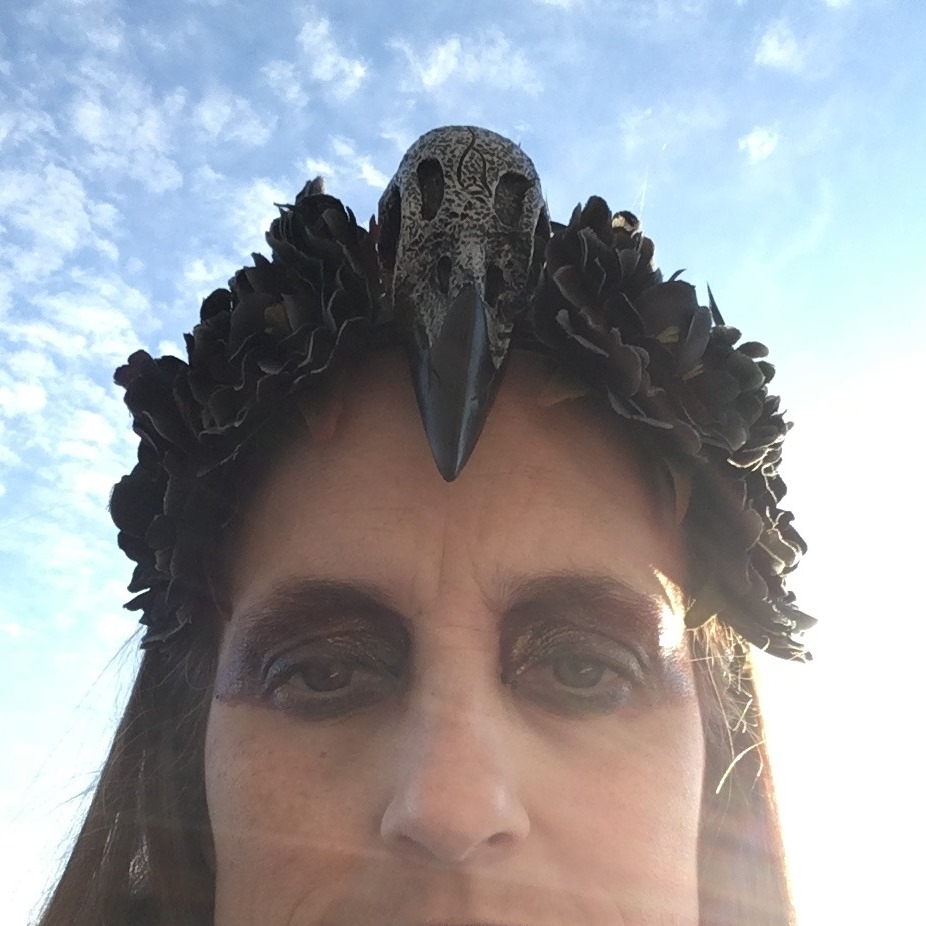
Sound
Dolores Roach, The Greatest Threat to Our Survival
We have reached the last episode of the podcast, Dolores Roach. No, this really is the end. There are no more episodes unless they’re hidden away on some Patreon page I don’t have access to.
The reason I’m being clear upfront about this is because, after you listen to this episode, the fact that there are no more episodes is going to be both confusing and infuriating.
The story
This episode begins with Dolores in a tunnel, being chased down by a train. She barely manages to escape, jumping onto a subway platform and then boarding the train that almost hit her.
Dolores is in a state of panic. She just escaped the tunnels. She just saw Mother Cleats killed. Now, she’s on a subway train, surrounded by people she doesn’t know. And she is a mess. She hasn’t showered since going down in the tunnel, after all. She probably doesn’t smell great.
Dolores rides the train to Coney Island and gets off. She walks to the ocean and gets in the water to wash herself. And when she comes out, she’s recognized by an old friend, Georgie.
And it is then that we realize that it’s been Georgie she’s been telling this whole story to.
Seeing the state Dolores is in, Georgie insists that she come home with her. She gets Dolores some clothes and something to eat and makes her tell her everything that happened down in the tunnels.
And then, Georgie’s son comes home. A seventeen-year-old son who looks exactly like Dominic.
That’s where the story ends.
What worked
I had a hard time finding much to like about this finale. If it hadn’t been the last episode it would have been great, but it was.
However, I did like the shift in perspective that takes place when it’s revealed that Dolores has been telling this whole story to Georgie this season. Because of course, up until now, it’s felt like she was talking to us and only us.
What didn’t work
This episode had a lot of problems. For one thing, I didn’t trust Georgie from the start. And that distrust just got worse the more we saw of her. She’s a true crime writer who just happens to find Dolores when she comes out of the tunnels after two months. No, Dolores isn’t buying it and neither am I. And inviting a woman you have reason to believe is dangerous into your home is stupid. No one in their right mind would have done that. No parent would have allowed Dolores within the same block as their child. The whole thing was unbelievable.
But that complaint pales to the largest issue I have for this season finale. For this episode that is, as far as I can tell, a series finale.
I say that because I cannot find another episode listed anywhere. If I were to have just listened to this episode without knowing that, I would have assumed this was just a mid-season twist.
Because that’s what this feels like, a mid-season twist. It answers nothing. It wraps up nothing. It gives us no satisfaction at all. And that is more than frustrating. It is infuriating. It ruins any joy we might have gotten from the rest of the season.
The ending of Dolores Roach was, in short, not an ending. It stopped in the middle of the story, there’s just no way around it. And this episode came out in October of 2019, almost five years ago! I know that podcasts are rather notorious for having long periods between seasons. Mine is no exception, season three of AA will likely not see the light of day until 2025 at the earliest. But after five years I think we can all safely assume that we’re not getting any more episodes. And so Dolores is always going to be in limbo. We are never going to know whether or not Georgie was telling her the truth. We’ll never know what happened to Ginger or Ephraim. We’ll never know what Dolores does, standing in her old friend’s house with what appears to be Dominic’s seventeen-year-old son standing in front of her.
We will never know, because the show is taking an entirely different turn. And so, I’m afraid I have to add Dolores Roach to the same infamous list as Lime Town or The Black Tapes. This podcast was great until they decided to just not end it.
If you’ve waited this long to see if you should listen to Dolores Roach, here’s my advice. Listen to season one, it had a reliable and satisfying ending. But season two should be left in obscurity where all half-finished stories belong.
 (1 / 5)
(1 / 5)
If you’re a fan of my work, please check out my latest story, Nova, on Paper Beats World. New chapters every Monday, Wednesday, and Friday.
Sound
Dolores Roach, Still Twitching
We’ve reached not only the second to last episode of this Dolores Roach season but the series as a whole. If you’ll recall, last episode we were riding the high of a great new villain. We had an unexpected and shocking story arc.
Now, after listening to this second-to-last episode, that high is gone. And we are left with disappointment, lamenting what might have been.
The story
We begin our story with Dolores being shown to her new home. The home she’s to share with Ephraim is considerably smaller than the home they were sharing before.
Ephraim is thrilled. He’s read Mother Cleats’ treatment and is all in.
This doesn’t make sense to Dolores. To her, this place seems like a downgrade. But for Ephraim, it’s a chance to belong. A chance to feel safe, to not fear hunger or violence.
Dolores has no illusions of being safe from that, though. And she’s not thrilled with being drafted as the Chain’s new killer and cook.
She tries to get Ephraim to run with her. Even prison would be better than what she’s facing. But he doesn’t intend to go anywhere.
Next, Dolores tries to get Ginger to go with her. She points out that having a baby in a tunnel instead of a hospital is probably not her ideal birth plan. But Ginger has some sort of strange fit and screams at her.
Dolores is lost, unsure how she’ll ever fight her way through all of these people to get out of the tunnels. But at the last moment, she gets unexpected help from a very unexpected source.
What worked
Let me begin by saying that it’s honestly hard to say that anything worked in this episode. Which isn’t to say that it was bad. The acting was as wonderful as it’s been the whole series. The sound editing was wonderful.
But everything that did work suffered from the pacing. We’ll discuss that more later.
This episode was full of sudden yet inevitable betrayals that I love. I don’t want to ruin the fun for you. But it’s safe to say that no one is on good terms with anyone at the end of this. At least, the people still alive.
I also appreciated the setup for a pivotal death. Early in the season, Ephraim told us that the middle rail was certain death to touch. I think we all knew that this was going to come up eventually. That we would, sooner or later, see someone’s eyes melt out of their sockets. And yes, I’m pleased to say that did happen.
What didn’t work
If the podcast Dolores Roach has a flaw it is in its pacing. And that flaw came very much to light in this episode. Because this should have been at least two episodes.
It was not as fun to see the ending of this episode as it would have been if there had been more build-up. An important character betrayal didn’t mean as much as if there had been more of a build-up.
Overall, this story would have felt so much richer if there had been more room to breathe and experience them. It was as if we were to be served a wonderful meal. And instead of savoring it, we shoveled it down without truly tasting it. And that’s a shame. This seemed like a delicious story. I wish we could have tasted more of it.
Even though there should be more, there is only one episode left of Dolores Roach. And I don’t know how to feel about that. They’ve done everything they set up to do already. So, what’s left for Dolores now? That’s the only question we have left to answer.
 (3 / 5)
(3 / 5)
If you’re a fan of my work, please check out my latest story, Nova, on Paper Beats World. New chapters every Monday, Wednesday, and Friday.

